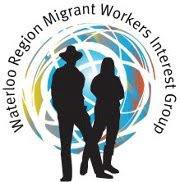4 min read
Written by Janet McLaughlin

On February 6, 2012, in one split second, the world changed for many people. Eleven families lost beloved partners, fathers, sons, cousins, and uncles. Many others lost co-workers, neighbours and friends. Yet most of us living in Waterloo Region, the same community in which ten of these workers resided, did not know these men personally, nor did we even know of their existence in our midst. Such is the reality for hundreds of thousands of migrant workers in various sectors across the Canadian economy, and for tens of thousands working in agriculture specifically. They live and work in our communities, they pay taxes and spend money, and they do the work few Canadians want to do, all the while helping to ensure that many Canadian businesses stay profitable. Yet they remain largely invisible to the wider Canadian society, until, due normally to tragic circumstances, they make the news.
Since the untimely deaths of these men, migrant workers have made local, national and even international news. Questions have arisen about these workers mainly because most of us were surprised to hear that a crew of workers from Peru were living in Kitchener and vaccinating chickens at a local poultry operation. People have been asking questions such as: How many workers are here? Why are they coming to Canada? Who are they? What are their working and living conditions? Why aren’t Canadians doing this work? What were the circumstances surrounding the tragic accident that so quickly and cruelly took their lives, for some only days after arriving on Canadian soil? These are all valid questions, and numerous media reports have sought to investigate these issues. We’ve all learned a bit more about migrant workers, and shaken our collective heads in sadness about the fate of this particular crew.
The grieving will continue for a lifetime for the affected families, while for the rest of us, life will go on as usual, and we will be distracted by new stories that arise in the media, until the next time migrant workers make the news. Perhaps it will be another vehicle accident (migrant workers’ transportation is under-regulated and notoriously precarious — every year, migrant workers die or are seriously injured while on Canadian roads, whether in bicycle, farm vehicle or car collisions, but normally in ones or twos that do not arouse as much public attention). Or maybe we’ll hear about workers dying in a workplace incident or being sent home without pay — other types of extreme situations that grab headlines from time to time. The same questions, and the same debates, will undoubtedly arise again. Such is the ebb and flow of daily news media, and of our collective fleeting attention spans.
In the interim months, however, thousands of migrant workers will continue to toil in Canadian industries, the majority here in Ontario. Most of them will remain largely invisible to the communities in which they live and work. If current trends continue, increasing numbers of migrant workers will arrive with little awareness from the Canadian public. These workers, many of whom don’t speak English or French, often lack full access to basic services, knowledge about their rights and benefits in Canada, and any sense of belonging to the communities in which they are placed.
What if we were to create a different picture? What if we greeted migrant workers when they arrived in our community? What if we provided workers information about their rights and benefits, in their languages, and with the supports they needed to access them? What if we consistently provided health and safety training to all migrant workers? What if we reached out to ensure the community services that most of us take for granted were made readily available and accessible to these “permanently temporary” residents?
This is the vision behind the Waterloo Region Migrant Workers Interest Group (WRMWIG). Based on similar models in other communities, such as the Niagara Migrant Workers Interest Group, the purpose behind this loose network of groups and individuals is to create a community that welcomes, integrates and supports the workers who call this place a second home. The group has announced its first meeting, details below, and all are invited to attend. Donations are also welcome to help provide services to workers and to create a sustainable presence.
The ultimate hope is this: The next time we hear about migrant workers in the news, more of us will know their names, and a maybe even a bit more about their lives, their families and the hopes and dreams that brought them to Canada. And, just possibly, it will be a good news story instead of another tragedy.
Janet McLaughlin is an Assistant Professor of Health Studies at Wilfrid Laurier University who specializes in migrant workers, and a founder of the Waterloo Region Migrant Workers Interest Group.
Meeting notes
Tuesday, March 6, 2012
6–7:30pm
The Queen Street Commons (The Working Centre Cafe), 43 Queen St. South, Kitchener
The meeting will feature a presentation by WLU Professors Janet McLaughlin and Jenna Hennebry followed by an open discussion.
For more information, write to: wrmwig@gmail.com or visit the group on Facebook: http://www.facebook.com/pages/Waterloo-Migrant-Workers-Interest-Group-W-MWIG/274696392602654
